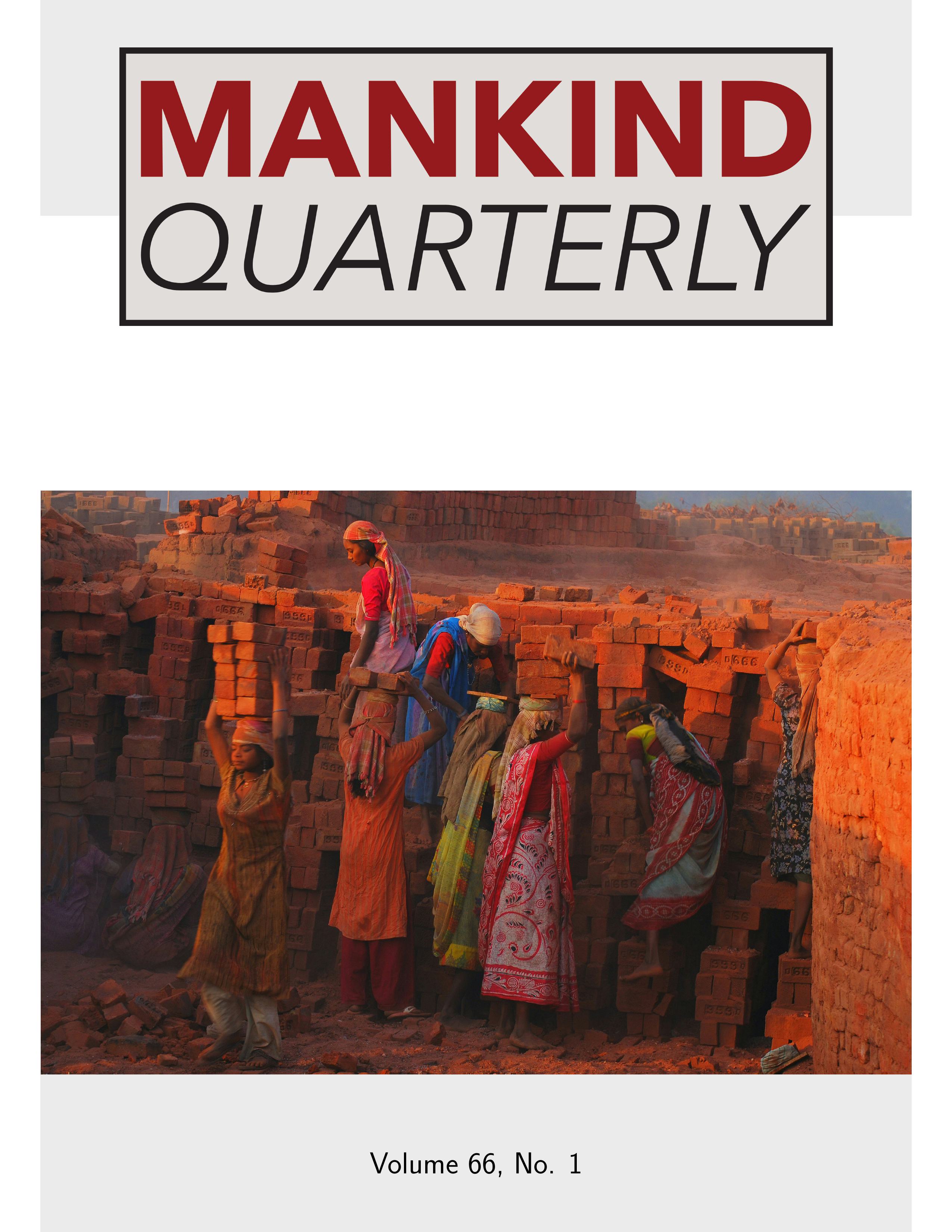Home > Archive > Volume 47, No. 1-2 > This paper
Ethnic Anthropology of the Former East Germany (before 1945): Geographical Differentiations and Feature Correlations
Andreas Vonderach
Published: 2006/12/01
Abstract
Using metric, morphognostic and dermatoglyphic data of 14-year old children of families displaced after WW II, recorded during a large survey in Westphalia by Schwidetzky and Walter (1967), the anthropological structure of former East Germany (before 1945) is reconstructed. A principal component analysis for 14 features yields the following 5 principal components which together explain 50% of the total variance: 1st a breadth component with high values in the South-East, 2nd an East-Europid component (oblique eye openings and prominent cheekbones) with high values in the Northeast (East and West Prussia), 3rd a pigmentation component with high values in the South, 4th a brain-case component (i.e. cephalic index and the morphognostic shape of the back of the head) and 5th a face profile with deep position of the eyeballs and prominent chin. The 4th and 5th PC show a similar geographical frequency distribution as the 1st PC with a North-West to South-East gradient. The discussion considers the conformities and contradictions to the traditional types. The 2nd PC substantially corresponds to the feature pattern of the East-Europid type described by Egon von Eickstedt and originates in the Slavic and Baltic population substrate from the time before the German settlement in the Middle Ages. The remaining four principal components show relations to the typological Nordic-Alpine contrast. The representation of feature complexes, such as pigmentation and facial profile, in separate principal components rests on the methodical aspects of the principal component analysis (orthogonality) and common genetic or anatomic bases. The comparison between the correlation matrixes of the East German school children and the native Westphalians shows noticeable differences. The correlation between oblique eye openings and prominent cheekbones, which is 0.44 among the East Germans (i.e. the highest value), is only 0.07 among the Westphalians - which is not significantly different from zero. Instead, the Westphalians show several correlations between the facial index and physiognomic features some of which are opposed to those of the East German children and correspond to the traditional feature pattern of the Falic type. With respect to ethnic differentiations, especially the physiognomic features of the face yield a great deal of information. This suggests not to discard types and not to regard them as homogenous and discrete entities but as clusters within the multivariate continuum. In this manner, the dominant present single-sided population concept which excludes feature correlations can be corrected, supplemented by a quite natural element of human groups.
Download PDF
